6 ambient master works
By Paul Stokes, 27 April 2018 (updated 23 October 2020)

6 Music marks the clocks going back and an extra hour of sleep with Slow Sunday on Sunday 25th October, a day dedicated to the more chilled-out, laidback music that will help you take a moment to regroup and reflect.
Ambient music is a genre that has long been perfectly tailored for this. From 1pm on Sunday and on demand via ����ý Sounds shortly after, Brian Eno (arguably the Godfather of ambient) speaks to Miranda Sawyer about his soundtrack work for a special episode of Sound and Vision. From 4pm meanwhile, Amy Lamé will be delving into the world of ambient and ambient house for her show.
To mark the occasion, we’ve selected 6 ambient master works that considerably improve our atmospheres.
1. Miles Davis – 'Sketches Of Spain'
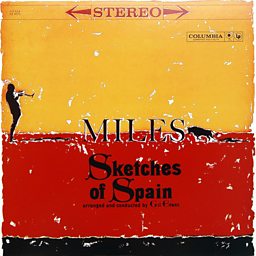
While its status as a jazz masterpiece is celebrated, 'Sketches Of Spain''s place as the first modern ambient album should not be ignored. Potentially there are atmospheric records or field recordings that predate Miles Davis’ s1960 jazz and classical fusion which are sonically more akin to later ambient works, but the way Davis deploys ambience in a deliberate and directed manner to create something undeniably evocative on this album makes it the forerunner of the other records on this list, and beyond.
Miles Davis was obsessed by the textures in musicJean-Michel Jarre
Recorded in Columbia’s 30th Street Studio, an ocean’s width away from its subject matter, the use of folkish motifs and military fanfares create scene setting, evocative pockets of atmosphere from which Davis launched his virtuosity.
Yet while the trumpeter’s performances star, he bends his style to create 'Sketches Of Spain''s unique ambience, for example playing the Adagio melody from Joaquín Rodrigo guitar piece, Concierto de Aranjuez, with a softness that releases its depth.
These evocative innovations certainly made their mark on the ambient electricians who followed.
“Miles Davis was obsessed by the textures in music, not just notes,” Jean-Michel Jarre told MOJO in 2016. “When you listen to 'Sketches Of Spain' you realise he's covering so many different aspects outside of jazz. It's the first ambient album ever, a masterpiece!”
2. Brian Eno – 'Ambient 1: Music For Airports'

After a few isolated forays, this was take-off for ambient music as a genre, with Brian Eno’s reaction to being bored waiting for a plane at Cologne Bonn Airport proving as intricate as it was innovative.
While atmospheric and evocative, Ambient 1… is driven by a strong sense of purpose
Created by layering four compositions on different tapes in a growing loop, 'Ambient 1: Music For Airports' is an artful yet practical creation.
Conceived to be simultaneously interesting to those passengers who engaged with it yet ignorable by those more concerned with their impending flights, Eno’s solution to a real world problem laid down the blueprint for the wave of electronically-driven ambient records that followed.
Though atmospheric and evocative, every moment of 'Ambient 1: Music For Airports' is underscored by a sense of purpose and strong direction.
With that in mind, the ever-evolving forces behind the soothing soundscapes Eno created not only prepared airport users for flight, but they allowed the generations of ambient producers who followed his lead to truly soar.

Why Brian Eno wrote Music for Airports
Brian Eno tells Jarvis Cocker about the genesis of his ambient masterpiece.

Guy Garvey's Oblique Strategy
Guy applies Brian Eno's Oblique Strategies to the process of making the Finest Hour
3. Aphex Twin – 'Selected Ambient Works 85–92'
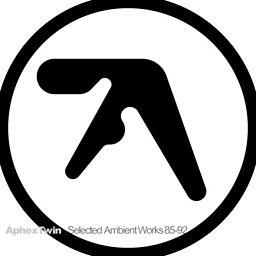
Richard D. James's debut as Aphex Twin not only changed the kind of music that could be made with beats, but also how those tracks were constructed in the first place.
This is ambience, but it is no easy ride.
Pushing sampling beyond obvious clips and loops, ambience itself – handclaps, snatched dialogue, sonic fragments from TV ads – became the building blocks of his innovative ambient compositions, forging a dizzying and productive artistic feedback loop in the process.
However, despite delving into the everyday for sounds – the academic nature of the album's title adds to the misdirection – Selected Ambient Works 85–92 is in fact a gateway to a unique sonic world, one which is equally beautiful and aggressive.
Sometimes James is happy to envelop the listener within soothing fragile melodies, yet in other moments storming beats and devilish distortion warp that reverie… often within a single track. This is ambience, but it is no easy ride.
A stunning creation in its own right, this record was also a key influence on the music Aphex Twin's successors created, and how they made it.
It's no exaggeration to state that without Selected Ambient Works 85–92 electronic music – ambient or otherwise – would sound very different today.

Mary Anne Hobbs on Aphex Twin: “he’s so wild, he’s so free”
Mary Anne Hobbs discusses Aphex Twin's Mercury Prize 2015 shortlisted album, Syro.
4. Boards Of Canada – 'Music Has The Right To Children'
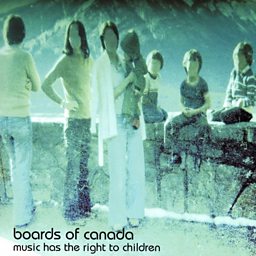
Ambience as time travel, Boards Of Canada’s debut is a sophisticated mix of moods, textures and rhythms that knew exactly what buttons it was pressing – both in the studio and emotionally.
Boards Of Canada’s debut delivers a propelled ambience
Peppered with nostalgic sonic scents and reminiscent harmonies – not to mention direct samples from children’s TV programmes –the duo’s album is underpinned by the familiar, but it’s no simple stroll through yesteryear.
Driven forward by strong, often abrasive beats, Boards Of Canada create a dynamically propelled ambience as they explore the spectrum of emotions that childhood forces us to confront – although the adult subtleties that inform these sonic mediations ensure it’s a mature, never rose-tinted composite of brutal beats and raw emotions.
Though Music Has The Right To Children itself has come of age – it was released on 20 April 1998 – such are the primal feelings Boards Of Canada tapped into, that its adolescent ambience timelessly rings true two decades on.
5. Jon Hopkins – 'Insides'
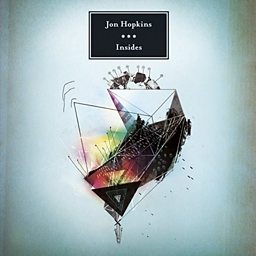
Having toured in Imogen Heap’s band and collaborated with Brian Eno – not only when Eno produced Coldplay, but also on his improvised 2010 album, 'Small Craft on a Milk Sea' – Jon Hopkins was endorsed by the ambient aristocracy early in his career.
With Insides Hopkins fulfilled his ambient destiny
However, his atmospheric credentials reach back even further than that: While studying piano at the Royal College Of Music as a teen, his twin obsessions became composers Ravel (swelling and surging rhythms and melodies) and Stravinsky (evocative folk music quotes harnessed within a bright orchestral clarity).
Therefore, an album of sparse, enveloping atmospheres was something that was always bound to appear within Hopkins’ discography, and with 2009’s 'Insides' he fulfilled his ambient destiny.
Blurring precise ambience and electronic beats with raw strings and warm pianos, the record covers a broad musical horizon. Ranging from dubstep and baroque, music created for the 'Entity projec't Hopkins was commissioned to score by choreographer Wayne McGregor is incorporated, while an epic version of his track 'Light Through The Veins', which had previously been borrowed by Coldplay to open 'Viva la Vida or Death and All His Friends', also features.
Yet for all of 'Insides'' sources it not only proves a coherent body of work, but as it moves from dark to light – and explores the shades in between – it delves through deep atmospheres that trigger real, raw emotions.
One suspects that not only are Hopkins' ambient forebears impressed by this compelling work, but his classical heroes would appreciate Insides too.

An Evening With Jon Hopkins
In an 'Evening With' special, Jon speaks to Nemone about his favourite tracks.
6. Four Tet – 'Morning/Evening'
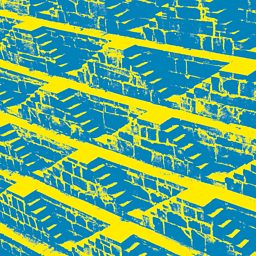
Having remixed Untitled from Aphex Twin’s mighty 'Ambient Works' (above) and hinted at his atmospheric inclinations in the sparser moments of 'Rounds' – Four Tet unleashed a full ambient rush with 'Morning/Evening' in 2015.
The record merged the structures from Indian music with electronic production
Inspired by a Lata Mangeshkar record Kieran Hebden inherited from his grandmother, the work merges the structures from Indian music – notably the raga mode – with electronic production.
The results are two 20 minute sonic journeys, 'Morning' and 'Evening', which occupy a full side of the record each.
Blending lo-fi textures with Hebden’s studio wizardry, 'Morning' lights up with skittering drum beats and expressive vocal samples while 'Evening' moves from sparse, trippy keyboards into garage-y percussion and pinging bleeps to reach an hypnotic climax.
Yet another impressive facet from Hebden’s ever-growing musical universe, 'Morning/Evening' proves an ambient perfect day.

Soundtrack Of My Life: Four Tet
Keiran Hebden on the records that have sound-tracked his life and shaped his music.
-
![]()
Slow Sunday on 6 Music
With the clocks going back, listen to 6 Music's Slow Sunday on 25 Oct
Follow us on , on Twitter , or on Instagram .











